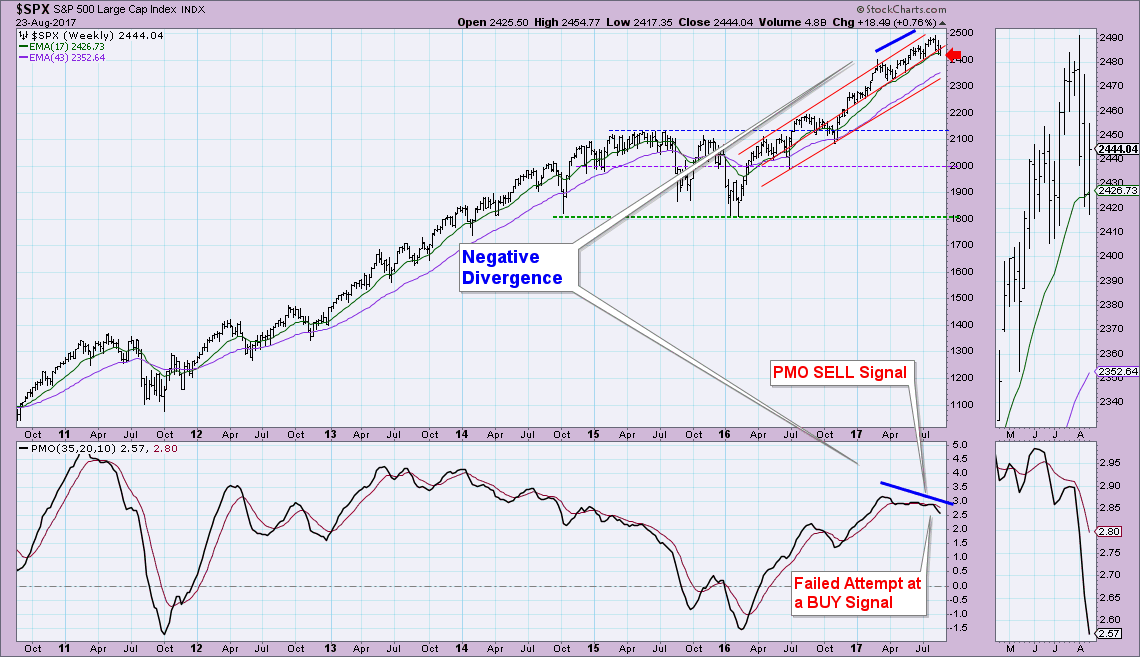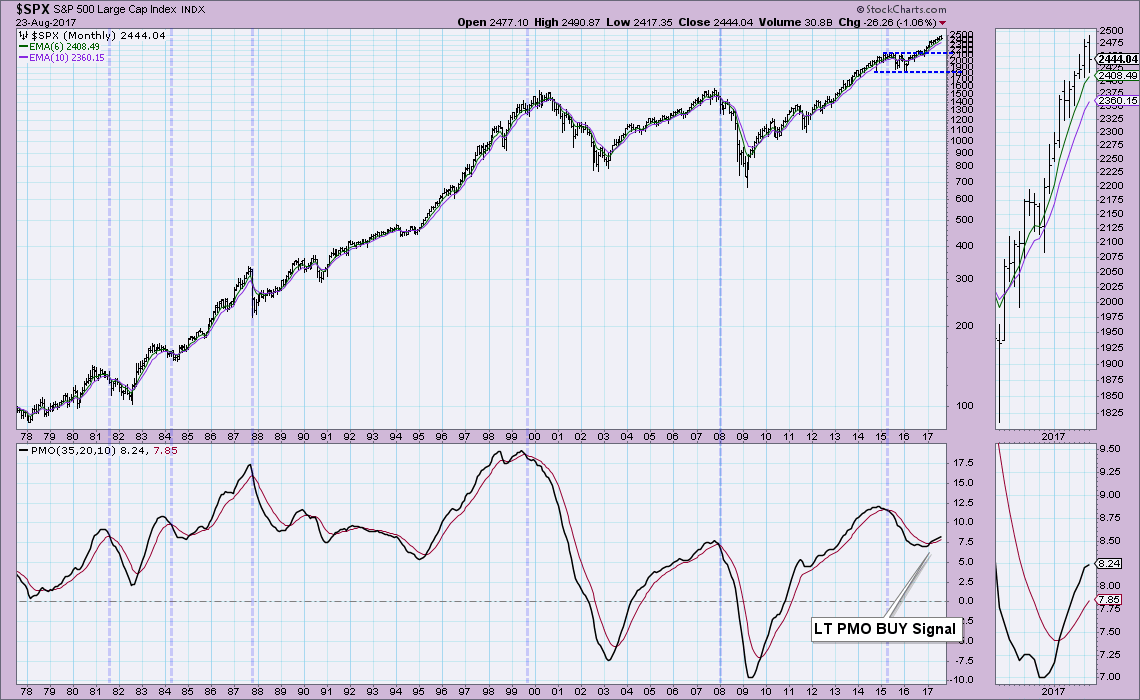
 Today was my first day back on the MarketWatchers LIVE show (you'll find the recording under the "Webinars" tab) and it was so much fun to reconnect with all the fans in the chat room and on Twitter. During our "Mailbag" segment, I was asked what I used to determine the overall health of the market in the intermediate and long terms. The answer was actually quite simple: I use the weekly and monthly PMOs. The signals tend to be very timely and very accurate.
Today was my first day back on the MarketWatchers LIVE show (you'll find the recording under the "Webinars" tab) and it was so much fun to reconnect with all the fans in the chat room and on Twitter. During our "Mailbag" segment, I was asked what I used to determine the overall health of the market in the intermediate and long terms. The answer was actually quite simple: I use the weekly and monthly PMOs. The signals tend to be very timely and very accurate.
The weekly PMOs can see some whipsaw, but the divergences are generally very clear. Note the negative divergence in play right now. If you look in the thumbnail, you can see that the PMO had a failed attempt at a BUY signal which is also very bearish. I'm concerned about the health of the market in the intermediate-term timeframe based on the configuration of the PMO and the beginning of a break down below the rising bottoms trendline. The 2400 level is critical, a drop below that level and I would expect to see a correction that could bring price as low as 2300.
When evaluating the long term, the monthly PMO is indispensable. What is great about the monthly PMO is that it doesn't usually whipsaw and signals are timely and accurate. I'd say the only SELL signal that didn't completely pan out would be at the late1987 crash. It was more of a price shock and unfortunately the monthly PMO can't necessarily spare us. Looking at the PMO before that crash, there weren't any negative divergences and hence very little warning; although it had reached very overbought territory. However, note the accuracy of the other PMO SELL signals. The best two were in 1999 and end of 2007. Both of those signals gave us time to react and protect profits. The final SELL signal in 2015 signaled the correction and sideways movement that followed. The BUY signal didn't arrive that late either.
Conclusion: Weekly and monthly PMOs are an excellent way to test bullish and bearish winds. They prepare us for corrections and bear markets, but seem to get us back in before profits are all gone. Given what I'm seeing right now, I don't like the intermediate term. The negative divergence and current SELL signal with acceleration are telling me to expect more downside, likely to the 2400 level at a minimum. Long term is still bullish overall which leaves me quite comfortable as far as my long-term buy and holds. You'll find the weekly and monthly charts for the DecisionPoint Scoreboard indexes in the DP ChartList (the link is at the top of the DecisionPoint blog page). Also be sure to look for DP blog article on the final trading day of the week (Carl's "Weekly Wrap") and a review of the monthly charts on the final trading day of the month.
Helpful DecisionPoint Links:
DecisionPoint Shared ChartList and DecisionPoint Chart Gallery
Price Momentum Oscillator (PMO)
Swenlin Trading Oscillators (STO-B and STO-V)
Technical Analysis is a windsock, not a crystal ball.
Happy Charting!
- Erin
**Don't miss DecisionPoint Commentary! Add your email below to be notified of new updates"**








